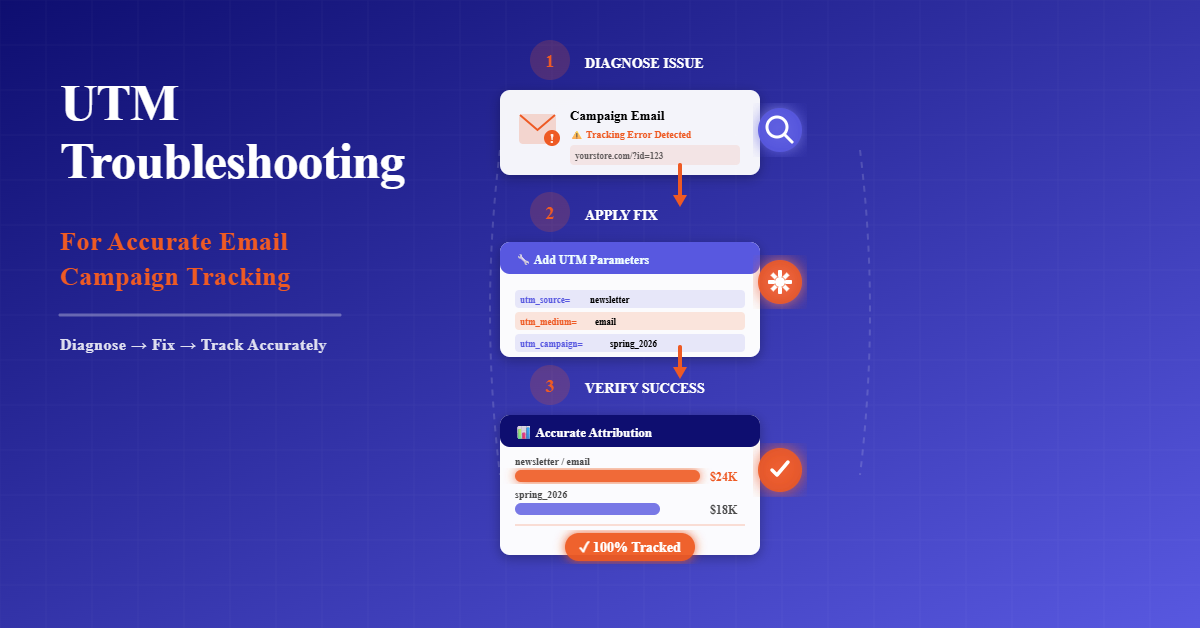For many beginners looking to open an online Magento store, or marketers looking to boost their site traffic, affiliate marketing is the first method that springs to their minds.
Affiliate marketing is considered one of the most effective approaches to earn passive income online. Research shows that more than 16% of all Ecommerce orders in Canada and the USA comes from affiliate marketing.
As you start an affiliate marketing program for your online business, you can fastly and economically generate more traffic and boost sales from your store while not investing a dollar upfront.
Does that sound appealing?
In this post, we’re going to help you understand deeply about affiliate marketing and how to set up an affiliate program for a Magento ecommerce store.
What is an Affiliate Program?

The Affiliate marketing program is an incredible method to make some cash online as publishers (Affiliates) support the business in promoting your products or services. People go to an online business site, choose their favorite item, then share and refer to others via affiliate links, often created using an Amazon affiliate link generator. If an order is placed through these links, affiliates can receive a commission from you. Simply put, affiliate marketing forms a beneficial relationship between store owners and affiliates.
Ecommerce merchants can take advantage of their sites’ influence, traffic, and expertise to create sales for their stores, and only pay commissions after a sale is completed.
Affiliates leverage their influence and web traffic to earn money from the store owners. They can not only receive a commission from direct sales but can gain commissions according to the number of other actions on the website.
Some examples of affiliate program payouts include:
- Direct sales: Get a commission from the traffic that generates a sale.
- Leads: Get commissions on actions such as social media follows content downloads and email signups.
- Clicks: A merchant aiming at driving a huge amount of traffic might consider applying the cost-per-click strategy to affiliates.
How can an affiliate program benefit a Magento store?

Pursuing an affiliate program leaves an amazing effect on your Ecommerce website. Here are some of the main benefits you’ll get if you decide to invest in affiliate marketing.
Low risk to entry
You can begin affiliate marketing whenever you want without any marketing skills or extra resources needed. What you need to do is to pick up a program and insert a tracking code to your site. There’s no need for you to pay upfront. You only pay an affiliate when a sale is completed.
Increase your audience
Affiliate marketers own an available quantity of followers and visitors, including social media influences, KOLs, bloggers, and vloggers. That creates a good chance to grow your audience and enter new communities.
Look at Tripadvisor for an example. Tripadvisor decides to develop its business to an affiliate model. They proactively build affiliations with third parties such as airlines, hotels, destinations to gain commissions.
Boost credibility
Your business’s reputation can be upgraded if you collaborate with famous experts, influencers, or bloggers. Thereby, cold customers will likely have more trust and confidence in your brand.
Jason Stone, also called the Millionaire Mentor, has achieved 5.5 million Instagram followers. He has made $7 million in retail sales thanks to his loyal fan group. Businesses in the financial industry would like to interact with his audience, so they reach out to him for help.

Excellent ROI
Affiliate marketing does a great job of generating sales. Only after a sale is created can your affiliates receive commissions, so you can improve ROI without any effort. The prospect of gaining more commissions gives momentum for them to keep promoting products from Ecommerce businesses.
6 Things to set up an Affiliate Program for a Magento store

1. Conduct competitor research
Before you step into the world of affiliate marketing, figure out what your competitors are doing.
Create a list of your competitors and look for their affiliate programs on Google. Hence, you can get to know their affiliate network, commission payouts, bonuses, cost-per-action, and cost-per-customers. Besides, you also can participate in their affiliate program to see what type of emails and incentives they’re attracting their affiliates.
For example, if your competitors offer 10% per sale and you see their stores on distinguished review websites, you can match the commission and leverage these sites.
If you just have a limited budget, you can look for affiliates that your competitors don’t work with, or optimize ROI with several affiliate partners.
2. Know the goals and KPIs of your affiliate program

After your research, it is essential to set your goals and key performance indicators. That will decide the sort of affiliates in your program and commission payouts.
Some examples of common goals include:
- To accelerate site traffic by 20% month over month
- To raise revenue by $10,000 by the end of this June
- To boost the average order value by $10 within three months
- To improve your conversion rate by 20% next year
When you’ve already had a list of goals, consider some metrics to evaluate your progress to meet your objectives.
Some examples of KPIs include:
- Click traffic – the number of clicks your affiliate program gets after a specific period of time.
- Gross orders – the total sales of your program gains.
- Net orders – the number of gross orders minus orders that are canceled because of complications such as customers returning the item, customers discarding orders.
- Commission – the amount of money you give to affiliates to advertise your business.
- Top affiliates and their share of total sales – the top affiliates that are generating the most income for your affiliate program.
- Performance from each type of affiliate – the group of customers your affiliates is bringing to your site. This could be the percentage of sales from loyalty affiliates.
- Percentage of productive affiliates – the percentage of affiliates that generate clicks and sales in a specific time period.
3. Follow a defined commission strategy
The next step is to calculate your cost per acquisition (CPA).
If you pay $100 to have a regular shopper, then you would have to take $100 from that shopper to break even, not consisting of your gross margin.
A good affiliate return on ad spend (ROAS) is 3:1. That means if you invest $100 in affiliates, you should earn $300 in gross revenue.
Alright, now let’s figure out the formula of CPA. CPA is the cost of gaining a new customer. Just divide your affiliate spend by the number of new customers acquired:
Marketing Spend/Customers = Cost Per Acquisition
For example, you invest $10,000 in your affiliate program and gain 20,000 site browsers. So that means you pay $0.50 for one visitor.
If 5% of these browsers fill in an email pop up and turn into potential customers (1,000), then your cost per lead is $10.
Within 20,000 visitors, 1% of them turn into paying shoppers (200 shoppers), then your cost per acquisition is $50.
Combining this data with your average order value, you can generate a commission campaign in your affiliate program that includes conversion rate, gross margin, cost of goods sold, cost per acquisition. Eventually, you can calculate a percentage you can afford to invest in.
4. Figure out your customer retention rate

Your customer retention rate (CRR) has an essential element in the commission you can pay.
With a high retention rate, you can invest more in your affiliate program as the customer you acquire will come back to buy more.
On the contrary, a low retention rate is a bad sign that you need to continuously gain more customers to be profitable in the future.
To get to know the customer retention rate, determine the following factors:
Quantity of customers at the end of the period – E
Quantity of customers at the start of the period – S
Quantity of customers at the start of the period – N
Now apply those to the formula below:
CRR = ((E-N)/S*100
Given that you began the quarter with 100 customers (S), you lost 10 customers but acquired 50 customers (N), so when the period ended, you gained 140 (E).
With the formula, calculate retention:
((140-50)/100)*100 = 90.
So your customer retention rate is 90%, which is quite high. Well done!
5. Determine customer lifetime value
Next, define your customer lifetime value (CLV)
This shows the profit you receive from your average customer while they remain a buyer.
To determine CLV, you can use the following formula:
(Average Value of a sale) X (Number of repeat transactions) X (Average retention time in months or years)
For example, you run an Ecommerce subscription business and shoppers spend $10 per month for 2 years, then you have:
$10 x 12 transactions x 2 years =$240
This helps you recognize that every new customer acquired from an affiliate sale is worth $240 to your business.
6. Determine your commission payouts
If you create many sales from your affiliate marketing strategy and you can pay 15% on product sales, then keep going, but remember the last factors we’ve mentioned including customer retention rate, return on ad spend, customer lifetime value, and many more.
Your margins play a significant element in what you can afford to offer commissions. For instance, if you work with dropshipping suppliers and your margins are 25%, you should offer your affiliates less than if your margins are 30%.
Here are several of the tips you should consider when calculating your payouts:
- Don’t pay based on clicks or impressions. Affiliate marketers will likely go for CPM payments over CPA as it limits the risk for them. CPM does not always turn into sales and you might have invested a large amount of money without any good result.
- Encourage affiliates to select your program. There are numerous companies that hold appealing affiliate programs. It’s critical that you lure affiliates to pick your program via rewards, high commissions, and benefits.
- Offer affiliates contests and promotions. You should ensure to email your affiliate and give them higher tier payouts, bonuses, contested to make them interested in promoting your products. This does a good job of building a great relationship when you’re onboarding your new partners.
- Determine commissions according to your competitor analysis. Competitor analysis is really necessary as you need to know the standard for your niche, the number of commissions given, and their campaigns. If you have a deep understanding of your competitors, you can identify how to lure quality affiliate marketers for your program.
- Begin with an affiliate network. If you don’t know where to begin, find affiliate networks. They can charge a monthly fee but can support you with everything you need to start your program.
Do you want to set up an affiliate program for a Magento store without any effort? Check out at the Mageplaza Affiliate for Magento 2.
Summary
It is undeniable that affiliate marketing stays among the most economical and scalable approaches to earn money for your Magento store. You can capitalize on the capabilities of other sites and influences in your niche to advertise your products, only paying them when you see results.
That’s the opportunity for your business to grow faster without spending a huge amount of money upfront. Good luck!




